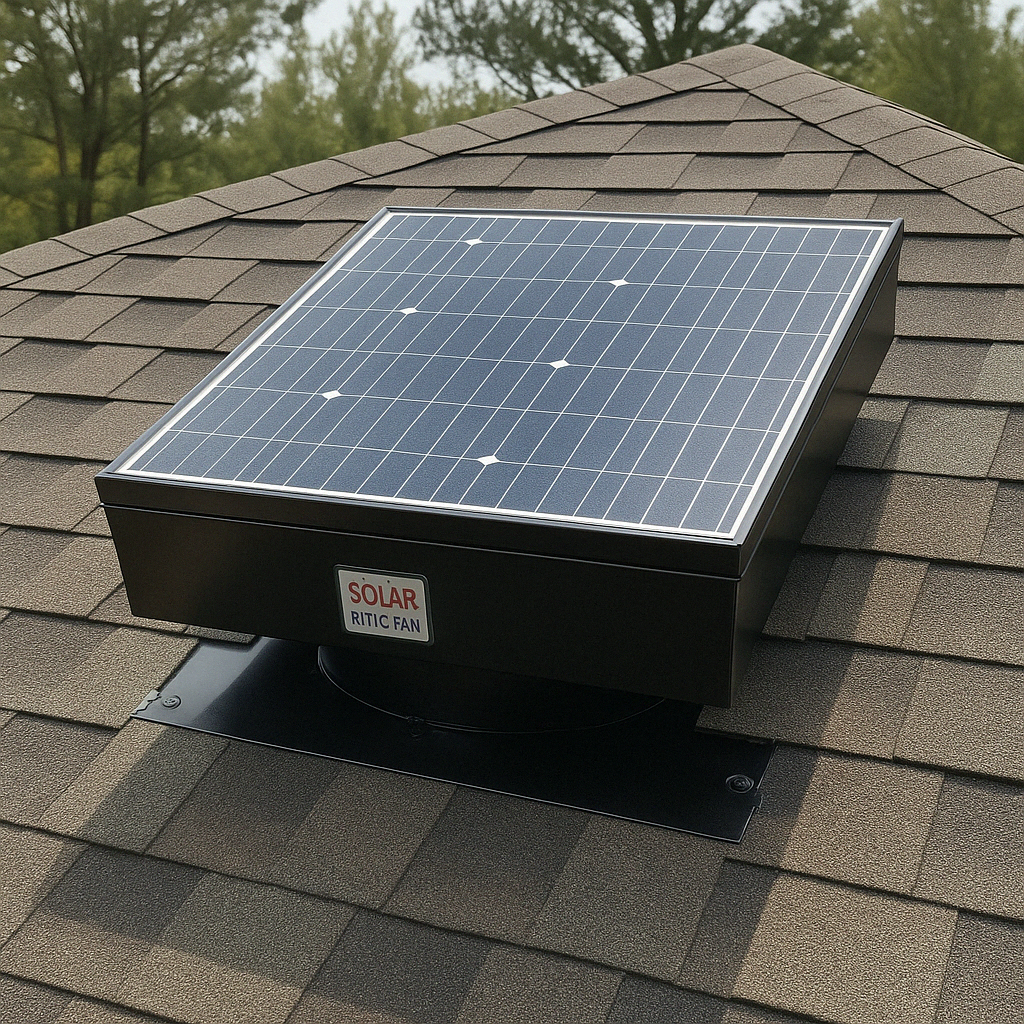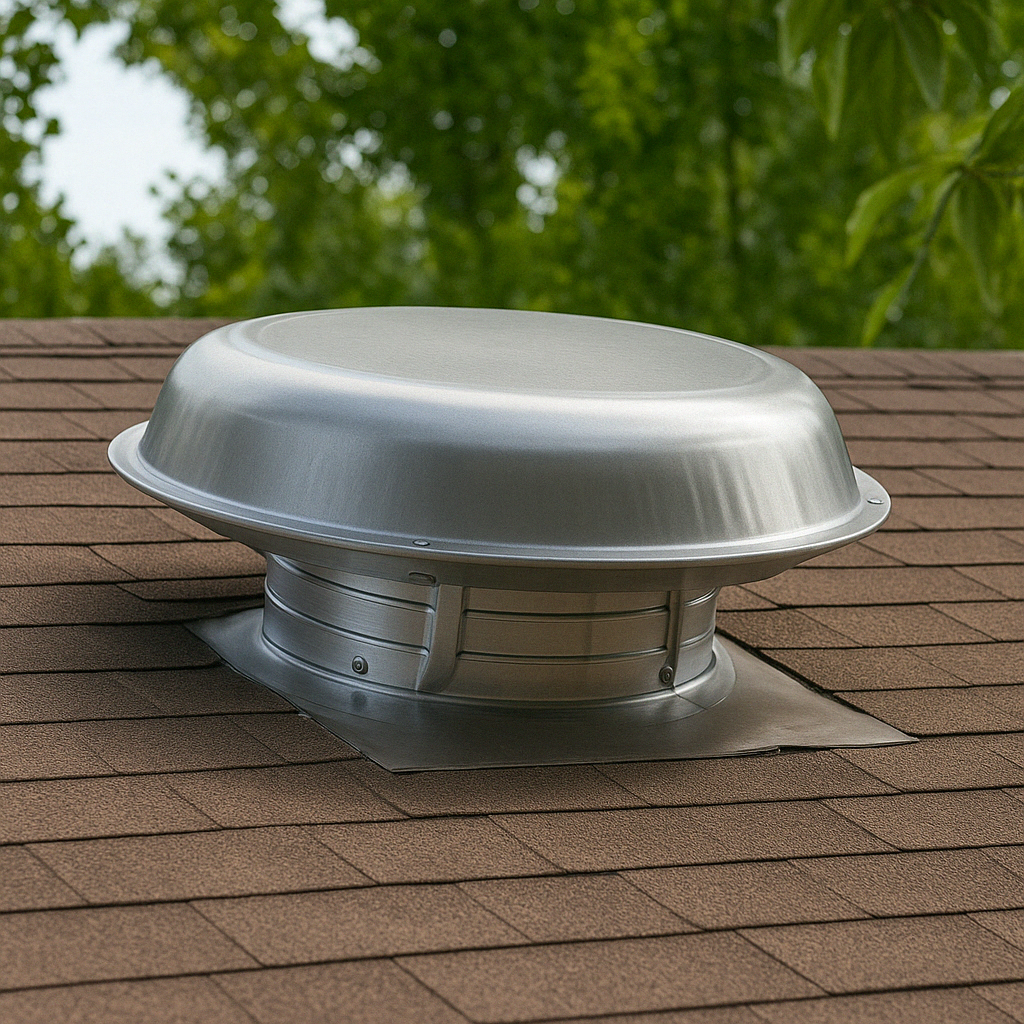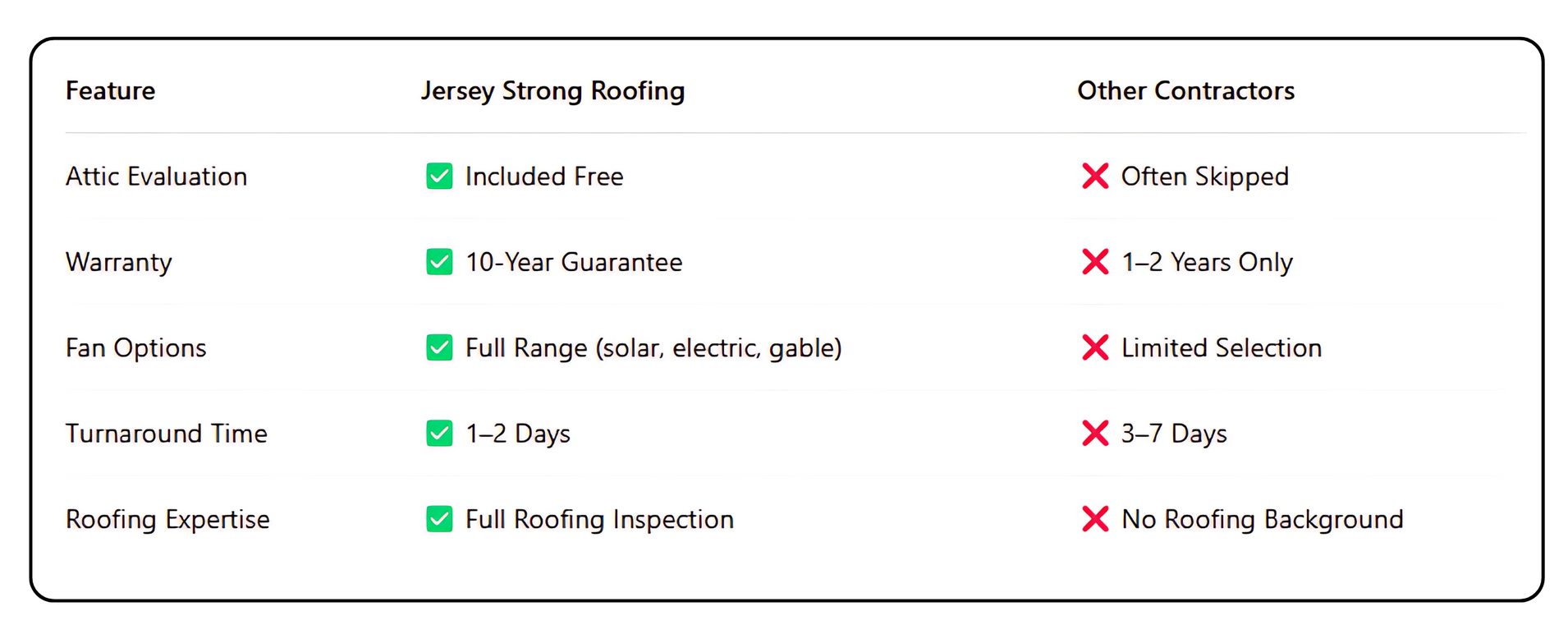Stay Cool, Save More — Expert Attic Fan Installation
Upgrade your home’s energy efficiency and roof longevity with professional attic fan installation from Jersey Strong Roofing. Fast, local, and built to last.
Is Your Attic Trapping Heat and Moisture?
Without proper ventilation, your attic becomes a heat trap—raising energy bills, damaging your roof, and stressing your HVAC system. Poor airflow leads to mold, warped wood, and insulation problems.
Install an Attic Fan the Right Way
Our certified, licensed attic fan installers evaluate your attic and roofing to determine the best ventilation strategy.
Whether you need a gable exhaust fan, solar-powered unit, or whole house fan system, we’ll install it correctly the first time—boosting airflow and protecting your home.

✅
Lower
energy bills year-round
✅
Prevent mold and moisture damage
✅
Extend roof
and HVAC lifespan
✅
Professional attic fan replacement
Our Easy 3-Step Process

1.
Free Inspection & Quote
We evaluate your attic space and ventilation needs.
2.
Customized Fan Recommendation
Choose from top-rated attic fans for your home.
3.
Professional Installation,
Final Inspection & Cleanup
Installed to code, sealed for efficiency.
We verify performance and leave your space spotless.
What People Say About Us
- Licensed & Insured Technicians
- Solar and Electric Fan Options
- Same-Day or Next-Day Service
- Compatible with Gable, Ridge, and Roof Fans
- 10-Year Workmanship Guarantee

Need Emergency Service? We’re On It.
Have a failing attic fan during a heatwave?
Call Jersey Strong Roofing for emergency attic fan replacement.
We prioritize urgent repairs to keep your home safe and cool.
Contact us any time
Contact Us
What is an attic fan, and how does it work?
An attic fan, also known as a powered attic ventilator, is installed on the roof or gable to expel hot air from your attic. It operates using a thermostat that activates the fan when attic temperatures rise above a set threshold, typically around 100°F. By removing hot air, it helps lower attic temperatures, reducing the strain on your HVAC system and potentially lowering energy bills.
Does an attic fan really help?
Attic fans are designed to expel hot air from your attic, which can help reduce the overall temperature of your home and lessen the strain on your air conditioning system. By lowering attic temperatures, they can prevent heat from radiating into living spaces, potentially leading to energy savings. However, the actual benefits depend on factors such as your home's insulation, existing ventilation, and climate. In some cases, if not properly installed, attic fans can draw conditioned air from living spaces into the attic, negating potential energy savings.
Is it cheaper to run an attic fan or AC?
Generally, attic fans consume less electricity than air conditioning systems. An attic fan typically uses around 300 watts, whereas central air conditioning units can consume between 2,000 to 5,000 watts. This means that, in terms of energy consumption, attic fans are cheaper to operate. However, it's important to note that attic fans are not a replacement for air conditioning. They can assist in reducing cooling costs by lowering attic temperatures, but during extremely hot or humid conditions, air conditioning may still be necessary to maintain indoor comfort.
What’s the difference between an attic fan and a whole-house fan?
An attic fan ventilates only the attic space, expelling hot air to reduce attic temperatures. In contrast, a whole-house fan is installed in the ceiling of your home and pulls cooler outside air through open windows, circulating it throughout the living spaces and into the attic. This method cools the entire house and is most effective during cooler evenings.
Are attic fans effective in reducing cooling costs?
Yes, attic fans can be effective in lowering cooling costs by reducing attic temperatures, which in turn decreases the heat load on your home's interior. This allows your air conditioning system to operate more efficiently. However, the actual savings depend on factors like climate, attic insulation, and proper ventilation.
Can attic fans cause problems if not installed properly?
Improper installation of attic fans can lead to issues such as drawing conditioned air from living spaces into the attic, increasing energy consumption. They can also create negative pressure, potentially causing backdrafts with gas appliances, leading to safety hazards. Ensuring proper sealing and adequate intake vents is crucial.
Do solar-powered attic fans work as well as electric ones?
Solar-powered attic fans operate using solar energy, making them cost-effective and environmentally friendly. While they may have lower power compared to electric fans, they are sufficient for ventilating most attics, especially in sunny climates. However, their performance can be limited during cloudy days or in shaded areas.
How do I determine the right size attic fan for my home?
To size an attic fan correctly, calculate your attic's volume (length × width × height) and aim for a fan that can provide at least 10 air changes per hour. Additionally, ensure you have sufficient intake vents to allow fresh air to replace the exhausted hot air, typically 1 square foot of vent area per 300 CFM of fan capacity.
Is it beneficial to run an attic fan during winter?
Running an attic fan in winter can help prevent moisture buildup, reducing the risk of mold growth and ice dam formation. However, it's essential to monitor attic humidity levels and ensure that the fan doesn't remove too much warm air, which could increase heating costs.
How much does it cost to install an attic fan?
The cost of installing an attic fan varies based on the type (roof-mounted or gable-mounted), power source (electric or solar), and labor. On average, installation can range from $300 to $600. Solar models may have higher upfront costs but offer energy savings over time.
Can I install an attic fan myself, or should I hire a professional?
While some homeowners with electrical and roofing experience may install an attic fan themselves, hiring a professional ensures proper installation, sealing, and compliance with local building codes. Professional installation can prevent potential issues like leaks or electrical hazards.
What maintenance does an attic fan require?
Regular maintenance includes cleaning the fan blades, checking for debris, ensuring the thermostat functions correctly, and inspecting for any signs of wear or damage. Lubricating moving parts annually can also extend the fan's lifespan. It's advisable to perform maintenance checks before peak summer months.



